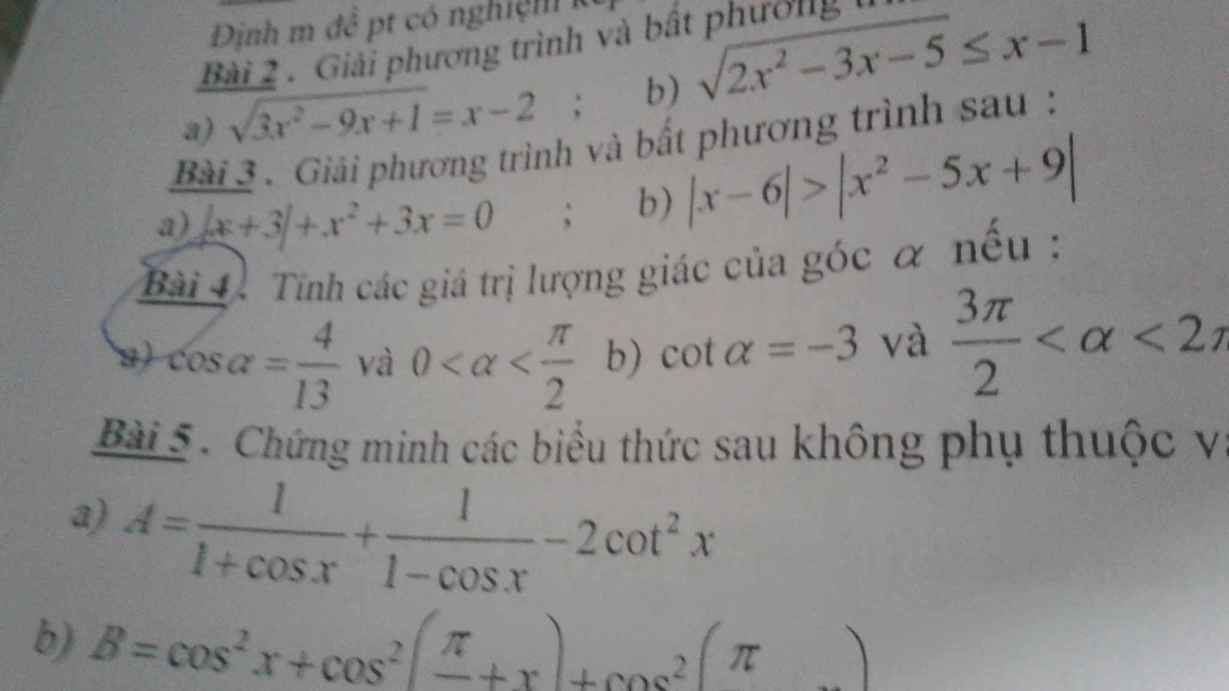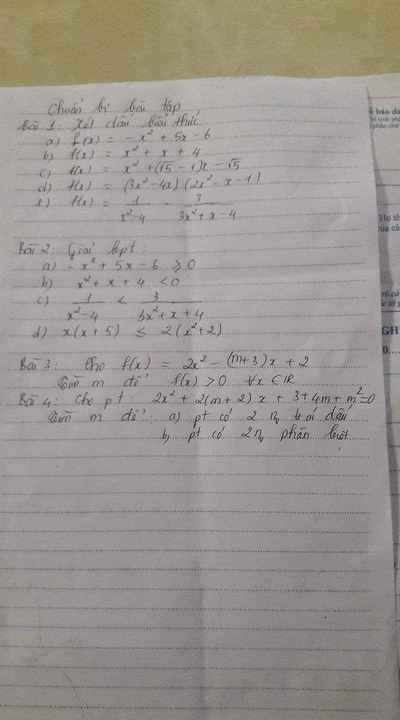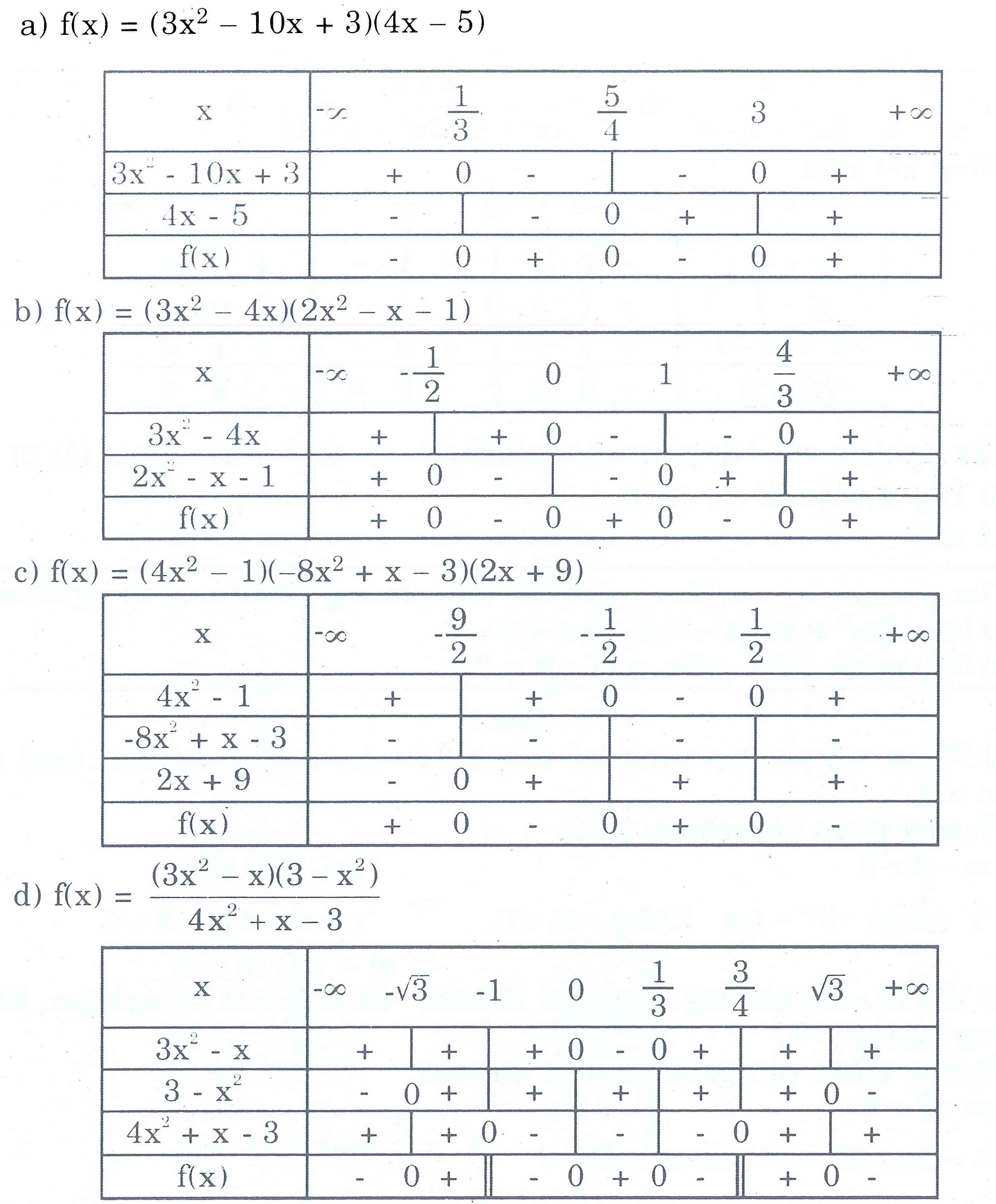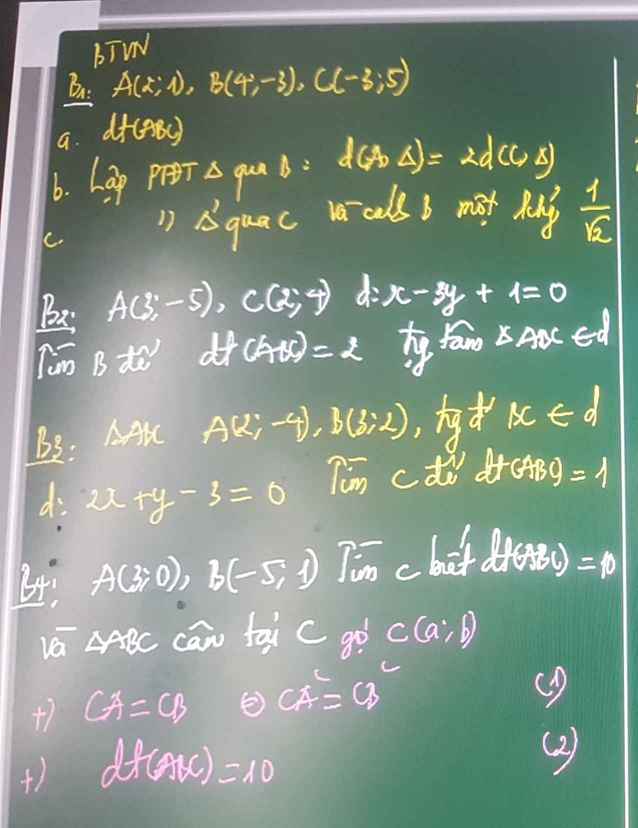
Hãy nhập câu hỏi của bạn vào đây, nếu là tài khoản VIP, bạn sẽ được ưu tiên trả lời.


Bài 6:
Vì \(m^2+1>0\) nên hs nghịch biến trong khoảng \(\left(-\infty;2m\right)\)
Bài 3:
6: \(x< 0\) nên \(y=\sqrt[3]{x}\) nghịch biến


a, 0 < a < \(\dfrac{\pi}{2}\) tức a là góc nhọn
⇒ sinA = \(\sqrt{1-\dfrac{16}{13^2}}=\dfrac{3\sqrt{17}}{13}\)
tan = sin/cos
cot = cos/sin (cái này tự tính nhá)
b, \(\dfrac{3\pi}{2}< a< 2\pi\) ⇔ \(270^0< a< 360^0\)
⇒ sin(a) < 0
cos (a) > 0
cot = - 3 => tan = \(\dfrac{-1}{3}\)
\(\dfrac{sin}{cos}=\dfrac{-1}{3}\), mà sin^2 + cos^2 = 1
sin < 0; cos >0
⇒ \(\left\{{}\begin{matrix}sin=-\dfrac{\sqrt{10}}{10}\\cos=\dfrac{3\sqrt{10}}{10}\end{matrix}\right.\)

`sin3x sinx+sin(x-π/3) cos (x-π/6)=0`
`<=> 1/2 (cos2x - cos4x) + 1/2(-sin π/6 + sin (2x-π/2)=0`
`<=> cos2x-cos4x-1/2+ sin(2x-π/2)=0`
`<=>cos2x-cos4x-1/2+ sin2x .cos π/2 - cos2x. sinπ/2=0`
`<=> cos2x - cos4x - cos2x = 1/2`
`<=> cos4x = cos(2π)/3`
`<=>` \(\left[{}\begin{matrix}4x=\dfrac{2\text{π}}{3}+k2\text{π}\\4x=\dfrac{-2\text{π}}{3}+k2\text{π}\end{matrix}\right.\)
`<=>` \(\left[{}\begin{matrix}x=\dfrac{\text{π}}{6}+k\dfrac{\text{π}}{2}\\x=-\dfrac{\text{π}}{6}+k\dfrac{\text{π}}{2}\end{matrix}\right.\)

\(\dfrac{tanx-tany}{coty-cotx}=\dfrac{tanx-tany}{\dfrac{1}{tany}-\dfrac{1}{tanx}}=\dfrac{tanx-tany}{\left(\dfrac{tanx-tany}{tanx.tany}\right)}=\dfrac{tanx.tany\left(tanx-tany\right)}{tanx-tany}=tanx.tany\)

Bài 20
Hệ (1) ⇔ \(\left\{{}\begin{matrix}1< x< 4\\x\le m-1\end{matrix}\right.\)
Đặt hai tập hợp A = (1 ; 4) và B = (\(-\infty\); m - 1]
Nếu m - 1 ≤ 1 tức m ≤ 2 thì A \(\cap\) B = ∅, hệ vô nghiệm
Nếu 1 < m - 1 < 4 tức 2 < m < 5 thì
A \(\cap\) B = (1; m - 1), tập nghiệm của hệ là (1; m - 1)
Nếu m - 1 ≥ 4 tức m ≥ 5 thì A \(\subset\) B. Tập nghiệm của hệ là A = (1; 4)

 Giải giúp mình từ bài 3 đến bài 6 ạ
Giải giúp mình từ bài 3 đến bài 6 ạ 









